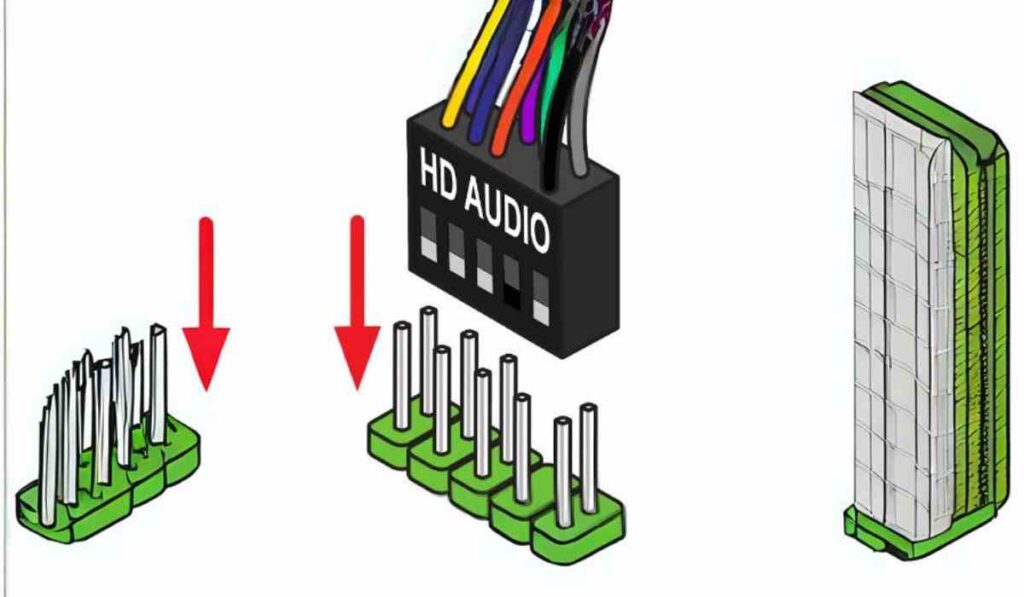Understanding Meniscus Transplant And Insurance Coverage

Let us inform you today about how a Meniscus Transplant brings hope to individuals coping with knee injuries in the realm of orthopedic treatments.
By restoring the structural integrity of the knee, patients often experience reduced pain, improved stability, and enhanced mobility.
We not only delve into the intricacies of meniscus transplant but also highlight the significant benefits associated with undergoing a meniscus transplant procedure.
Does health insurance cover meniscus transplant surgery?
Coverage for meniscus transplant surgery may vary depending on your health insurance policy. Some insurance plans may cover a portion or all of the surgery costs, while others may consider it an elective procedure and not provide coverage.
In this article, you learned about the basic anatomy of the knee, common causes and symptoms of meniscus injuries, how a meniscus transplant works, and insurance coverage considerations.
The Basics Of Meniscus Transplant
Before we take a deep dive into the financial aspect, it’s crucial to understand the nature of a meniscus transplant.
Unlike other bodily tissues or organs, meniscus tissue cannot heal itself easily because it lacks a direct blood supply. This fact makes tears and injuries to the meniscus far more challenging to repair.
A meniscus transplant, also known as meniscal allograft transplant, typically involves replacing a damaged meniscus with a donor meniscus.
The procedure restores the cushioning and shock-absorbing properties of the knee joint, thus alleviating pain and improving mobility for patients suffering from severe meniscus damage.
Why And When Insurance May Cover Meniscus Transplant
Medically necessary and actively used procedures are generally good candidates for insurance coverage. Insurance companies often consider a meniscus transplant as a covered procedure in the following scenarios:
Acute Injury
If the meniscus damage is due to an acute injury during a covered activity, such as sports or accidents, insurance providers are more likely to consider the transplant as medically necessary.
Failed Prior Treatments
Non-surgical treatments, including physical therapy and medications, must have been attempted and failed to relieve the patient’s symptoms sufficiently.
This step demonstrates to the insurance company that the transplant is not a “first-line” treatment but rather a last resort.
Precertification And Preauthorization

Before undergoing a meniscus transplant, it is critical to obtain precertification or preauthorization from the insurance company.
This process involves the surgeon providing the insurer with the medical necessity and expected benefit of the procedure for the patient’s health.
Meniscus Transplant And Different Types Of Insurance
Your ability to have a meniscus transplant covered can significantly depend on the type of insurance you have. We’ll break down how various insurance policies approach this type of surgery.
Private Health Insurance
For individuals with private health insurance, coverage for a meniscus transplant depends on their specific plan. Many policies cover the procedure if it’s deemed medically necessary.
It’s important to review the terms of your policy and check for any exclusions related to pre-existing conditions, out-of-network benefits, or specific surgical limitations.
Medicare

Medicare coverage for a meniscus transplant is determined based on whether the procedure is considered reasonable and necessary.
Medicare beneficiaries should discuss with their doctors and the Centers for Medicare & Medicaid Services (CMS) to understand which conditions must be met for coverage.
Medicaid
Medicaid, a joint federal and state program, may cover meniscus transplants if the surgery and associated care is state-approved and deemed medically necessary.
Coverage rules can vary significantly between states, and certain limitations or waiting periods might apply.
Worker’s Compensation
In cases where a meniscus injury occurs on the job, worker’s compensation insurance may provide coverage for a transplant.
The injured worker’s employer’s insurance carrier typically handles these claims, and benefits can include coverage for necessary surgeries and rehabilitation.
The Importance Of Policy Review And Communication
Understanding the details of your insurance policy is crucial before pursuing a meniscus transplant. It’s advisable to:
Read Your Policy Thoroughly
Familiarize yourself with the coverage, exclusions, limitations, and out-of-pocket expenses related to surgical procedures like meniscus transplants.
If you have questions, reach out to your insurer for clarification.
Communicate With Your Healthcare Provider
Discuss your insurance coverage with your healthcare provider. They can help guide you through the process of determining if a meniscus transplant may be covered and assist in seeking preauthorization from your insurance company.
Consider An Advocate
If navigating insurance policies seems daunting, consider working with a patient advocate. These professionals are well-versed in medical procedures and can help review your insurance policy to ensure you’re maximizing your coverage.
Meniscus Transplant Costs And Out-Of-Pocket Expenses
Even with insurance coverage, there are typically some out-of-pocket costs associated with a meniscus transplant.
These costs can include deductibles, copayments, and coinsurance fees. Since meniscus transplants are often considered major surgeries, the out-of-pocket expenses can be significant.
Deductibles
Before your insurance company starts paying for certain covered services, you usually have to meet your deductible. For many plans, the deductible is an annual requirement that resets every year.
Copays And Co-Insurance
These are the portions of your medical bills that you’re responsible for after meeting your deductible.
Copays are typically fixed amounts, while coinsurance is a percentage of the total bill.
Other Expenses
Patients may also incur additional costs for pre-transplant evaluations, diagnostic tests, physical therapy, and prescription medications.
Negotiating Meniscus Transplant Costs
If the out-of-pocket expenses of a meniscus transplant are a concern, don’t hesitate to negotiate with healthcare providers. Here are some strategies to consider:
Speak Directly With Providers
Discussing your financial situation and ability to pay with your healthcare providers can sometimes result in discounted rates or installment payment plans.
Seek Pre-Approval For Indicated Costs
When possible, secure written pre-approval for any indicated costs that may be your responsibility.
This action helps ensure that there are no surprises regarding what you will owe.
Review And Appeal Bills
After receiving medical bills, carefully review them for any errors or charges that appear excessive. If you believe a bill is incorrect, don’t hesitate to appeal the charges with the provider or insurer.
Financial Assistance Programs
Some healthcare providers offer financial assistance programs for patients undergoing significant medical treatments.
These programs can help mitigate the financial burden of out-of-pocket medical costs associated with meniscus transplants.
Charitable Care

Many hospitals and medical facilities have charitable programs for patients who meet specific financial need criteria.
These programs can cover some or all of the patient’s responsibility for medical bills.
Hospital Payment Plans
If you don’t qualify for charitable care, hospital payment plans can help manage your out-of-pocket costs by spreading the payments out over several months or years without incurring high-interest charges.
Know Your Options
It’s always best to be proactive and research available financial assistance options before undergoing any major medical procedure.
This knowledge can provide peace of mind and help you focus on recovery.
Building A Viable Funding Approach
In situations where insurance coverage is limited, and out-of-pocket expenses are high, having a viable funding approach is essential. This approach can include:
Health Savings Accounts (HSA)
HSAs allow individuals to set aside tax-free funds for qualified medical expenses. If you have a high-deductible health plan, contributing to an HSA can help you save for future medical needs.
Personal Loans Or Credit Cards
While not ideal, personal loans or credit cards can be used to cover meniscus transplant costs, especially when necessary surgery is urgent. Choosing these options should be a careful and informed decision, considering interest rates and terms.
Fundraising
Engaging in personal or community fundraising efforts can be a way to generate financial support for a meniscus transplant. Many people turn to crowdfunding platforms to share their stories and raise money from a broad audience.
Conclusion
Meniscus transplants can be a critical treatment for restoring knee function and quality of life for individuals with severe meniscus injuries.
While the thought of navigating through insurance matters can be daunting, taking a proactive and informed approach can significantly help manage the associated costs.
It’s crucial to thoroughly understand your coverage and benefits, communicate effectively with your healthcare providers and insurance company, and explore applicable financial assistance programs.
Remember, you’re not alone in this process. There are resources and professionals available to provide guidance and support.
Ultimately, the goal is to make the meniscus transplant procedure as accessible as possible for those who need it.
Through diligent research and strategic planning, patients can take steps to ensure they receive the necessary treatment without undue financial hardship.
FAQs
What is the success rate of meniscus transplant?
The research studies that have been done on meniscal transplants are not perfect. Overall, between 21% and 55% of transplants fail within 10 years.
Can I live without a meniscus?
Without this meniscus cushion, the ends of your tibia and femur may start to rub together abnormally. Over time, this can cause persistent knee pain.
Can you run after meniscus transplant?
A majority (77%) of athletes and physically active patients were able to return to sport after MAT; two-thirds were able to perform at preinjury levels.
How successful is artificial meniscus?
The failure rate was 13% overall, with 12% for medial and 16% for lateral meniscal repairs.
Is meniscus surgery painful?
Will I have pain after meniscus surgery?
You will have some pain immediately after surgery and for several weeks, which is normal. Your healthcare provider will prescribe medications to help you manage the pain.






















































































































































![[noblocc] Kicked For Being AFK](https://everytalkin.com/wp-content/uploads/2024/02/noblocc-Kicked-For-Being-AFK-Strategies-in-Online-Gaming-1024x597.jpg)







































































































































































































